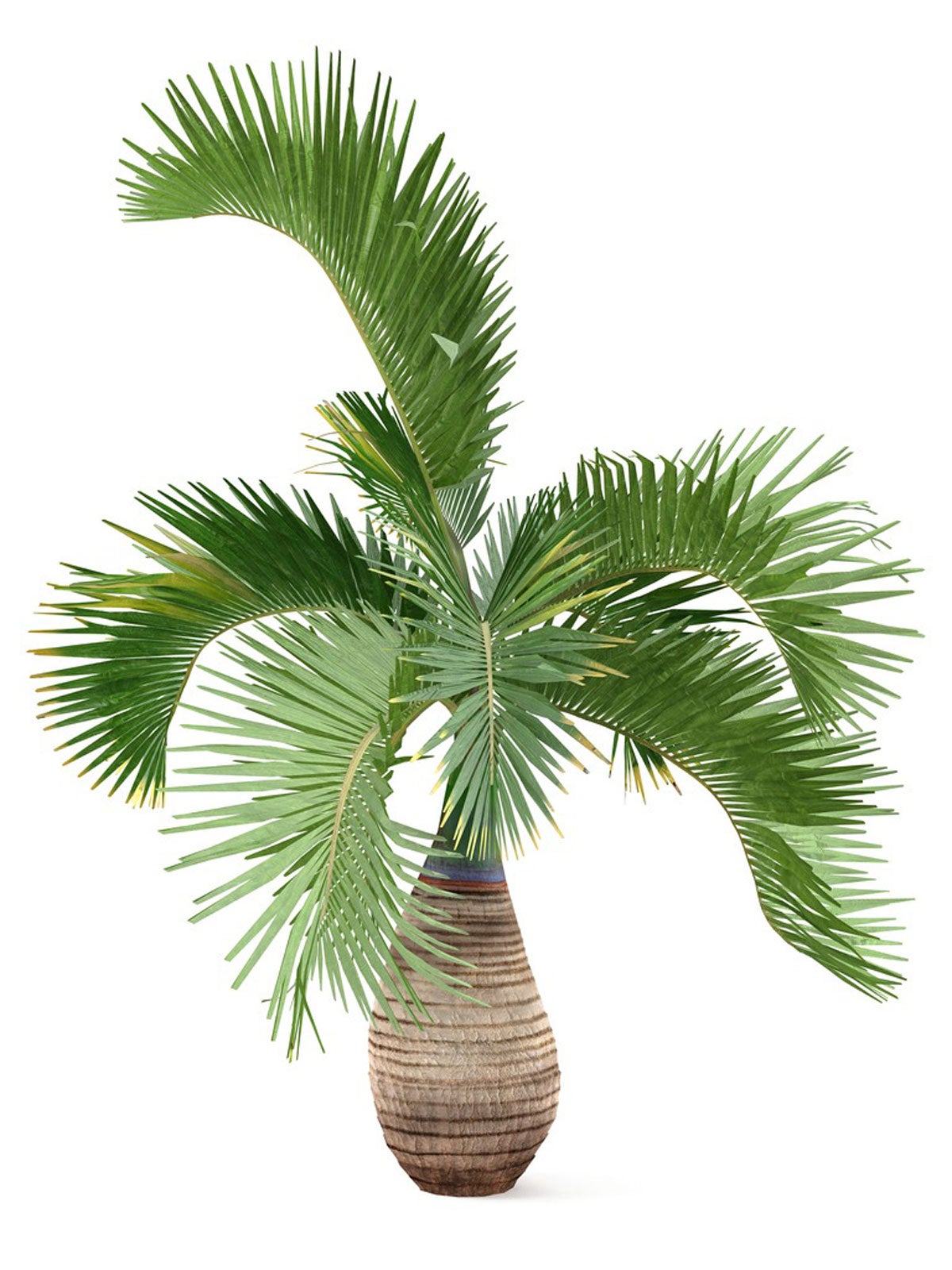Planting A Bottle Palm – Tips On Caring For A Bottle Palm Tree


Not all of us are lucky enough to grow bottle palms in our landscape, but for those of us who can…what a treat! These plants bear their name due to the trunk’s strong resemblance to a bottle. The trunk is swollen and rounded when young, becoming more elongated as the palm matures.
Bottle palm is a true palm that is native to the Mascarene Islands where warm, balmy temperatures and loose, sandy soil form the plant’s habitat. Planting a bottle palm in northern climates is not recommended, as they are not frost hardy.
Southern gardeners, however, should know how to grow a bottle palm tree and make use of this unique and stunning tropical plant.
Bottle Palm Tree Info
Plants develop all sorts of amazing adaptations to help them survive. Bottle palm trees have evolved with thickened trunks topped with scaly crowns. The purpose is unclear but might have been a water storage device.
Whatever the reason, the trunk makes for a standout silhouette in the garden or even as a potted plant. Caring for a bottle palm tree is a low maintenance chore due to its slow growth and drought tolerance once established.
The bottle palm is a true palm in the family Arecaceae. Its scientific name is Hyophorbe lagenicaulis. The last part of the name is from two Greek words, ‘lagen’ meaning flask and ‘caulis’ meaning stem. The name literally contains an important clue to the plant’s form.
More interesting bottle palm tree info is hidden in the first part of the name, Hyophorbe. Broken down, ‘hyo’ means pig and ‘phorbe’ means fodder - an indication that the tree’s fruit was fed to pigs.
Sign up for the Gardening Know How newsletter today and receive a free copy of our e-book "How to Grow Delicious Tomatoes".
These palms only get 10 feet (3 m.) in height but sport fronds that may grow 12 feet (3.5 m.) in length with 2-foot (61 cm.) long leaflets. The trunk is smooth and grayish white topped with scraggly leaf scars from old, departed fronds.
How to Grow a Bottle Palm Tree
Bottle palm trees require warm temperatures all year and tend to prefer drier soils. They are cultivated in Florida, southern California, Hawaii and other warm climates. Northern gardeners can grow the smaller trees in containers and bring them indoors before any frost threatens.
The site conditions that are optimal to bottle tree palm care are sunny, well-drained soil with plentiful potassium, either in site or added annually as a feed. When planting a bottle palm, dig a hole twice as deep and wide as the root ball. Add sand or topsoil to increase drainage and install the palm at the same depth it was growing in its pot. Do not hill soil around the stem.
Water well initially to help the plant develop deep roots. Over time, this tree can tolerate drought for short periods of time and it even withstands saline soils in coastal situations.
Bottle Palm Tree Care
One of the key areas of bottle tree palm care is provisions for protection from frost. Tie up the fronds gently and wrap the tree in a blanket or other insulating cover if cold temperatures are predicted. Even a light freeze can cause fronds to brown and die. Bottle trees are not self-cleaning, but wait until the weather warms up to trim off dead leaves, which can provide further insulation during the winter months. Fertilize in early spring with a high potassium ratio food.
Watch for pests and disease, and combat any signs immediately. Caring for a bottle palm tree is nearly effortless, provided they are in good soil, bright light and get moderate moisture.

Bonnie Grant is a professional landscaper with a Certification in Urban Gardening. She has been gardening and writing for 15 years. A former professional chef, she has a passion for edible landscaping.